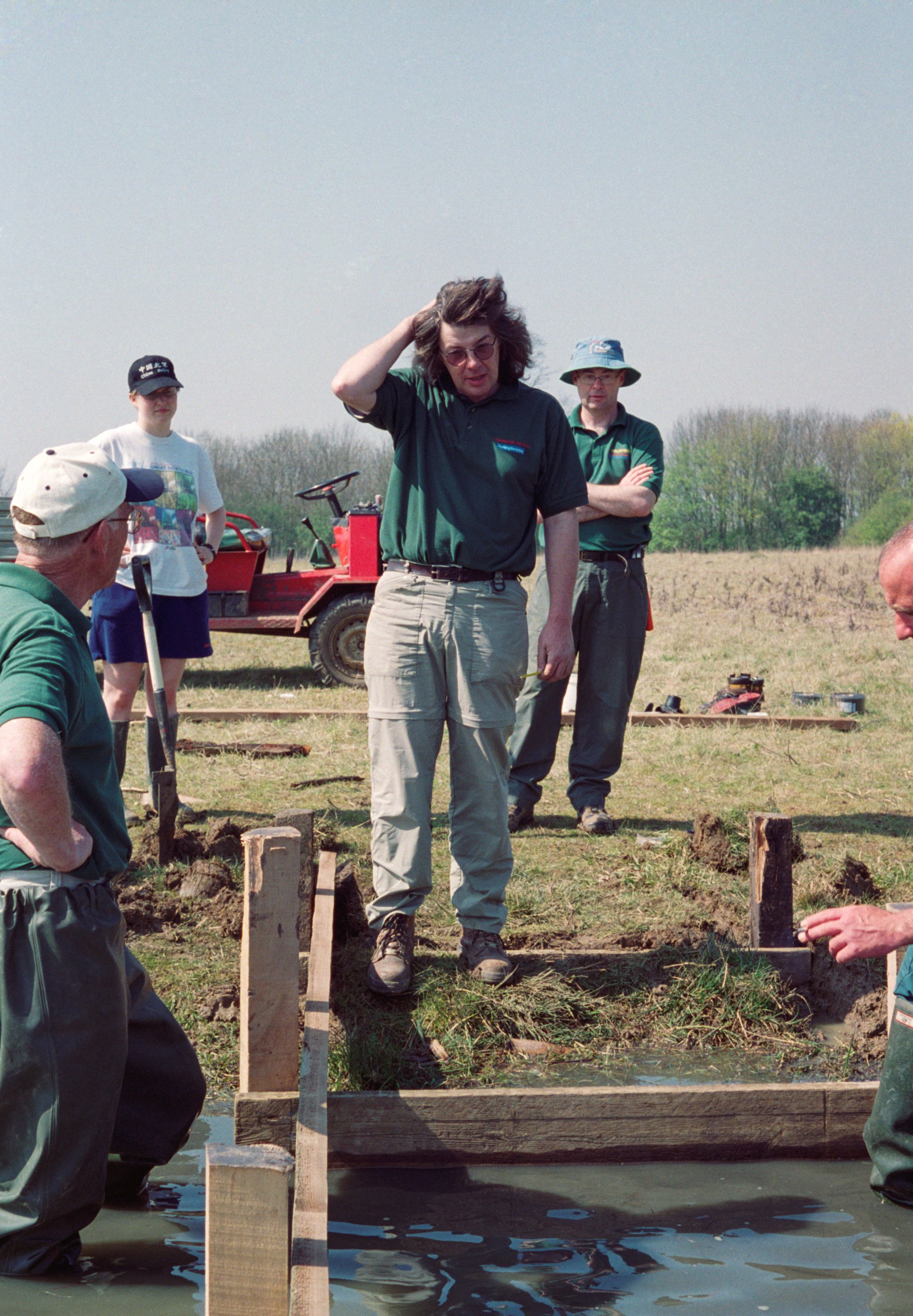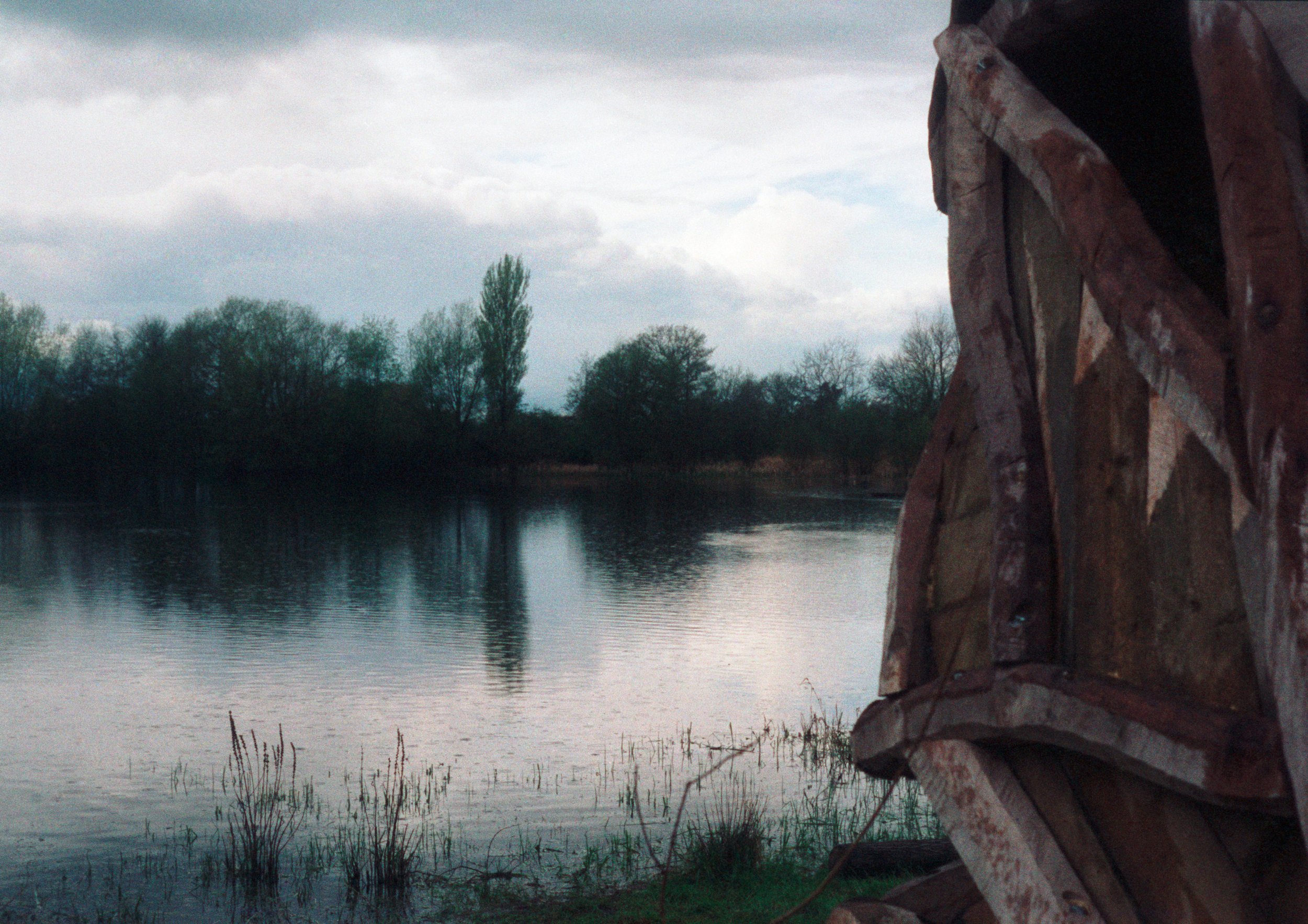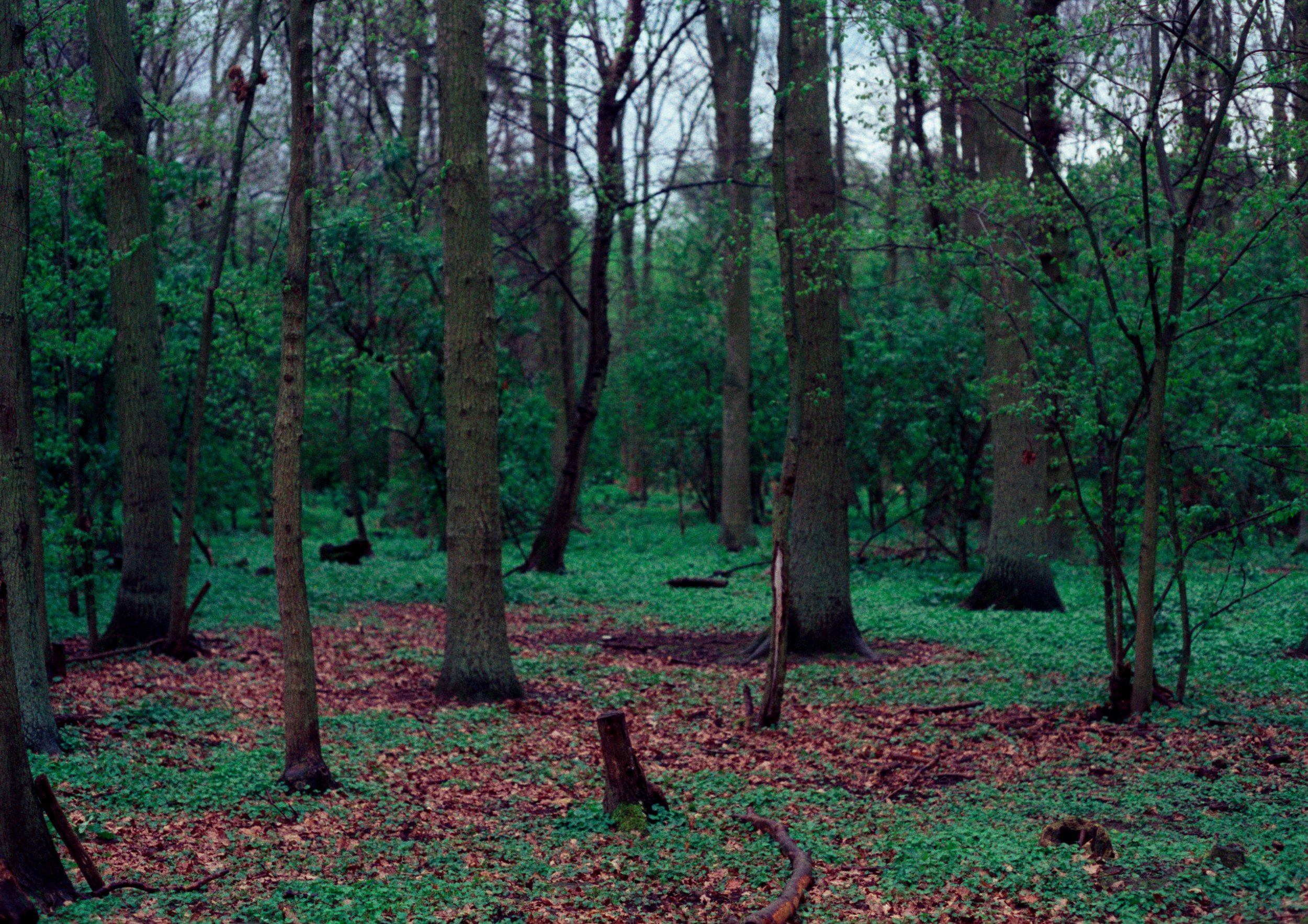Hinchingbrooke Country Park (2000–2002)
For several years I worked as a volunteer ranger at Hinchingbrooke Country Park and documented the process photographically; and what follows is a small selection of photographs from that period, exploring the park and the work conducted by its dedicated rangers team. All of these photographs were captured on 35mm film and have been scanned and painstakingly restored.
The Iron Age Camp
Hinchingbrooke Country Park used to have a reconstruction of an iron age camp, which was built in the 1990s by park rangers and volunteers and used for reenactment events and educational trips for the local schools. The camp had a small moat with a wattle fence surrounding its perimeter and several gates leading to the buildings in the middle of the camp. The buildings, which included a larger round house, were constructed from wattle and daub and had thatched roofs. The camp also had several fenced pens for keeping livestock, and when events were held in the camp goats and sheep were often brought in specially for the day for added realism.
Unfortunately throughout its life vandalism was a problem and on several occasions the buildings in the camp were burnt down. Eventually the camp fell into disrepair due to repetitive vandalism and was demolished.
The Iron Age camp had a wattle fence and small moat around its perimeter. Unfortunately this was not enough to deter local vandals and over the years the Iron Age camp fell victim to a number of incidents of vandalism.
Building A Pond Dipping Platform
In the summer the rangers team and volunteers build a new pond dipping platform on one of the park's many small lakes and ponds. The process involved setting posts underwater; these had to be hammered into the mud deep enough so that they could support the platform erected above. The platform was then constructed on top of the posts. The entire process took several days work.
Bird Hides & Nature At The Park
Allowing the park's natural habitat to flourish and providing the local public with a glimpse of that environment were both important parts of the park's overall mission and the park had several specially constructed bird hides on the shores of its lakes. These were constructed and maintained by the ranger team.
Looking out from inside of one of Hinchingbrooke Country Park’s bird hides. This bird hide was constructed from carved wood and situated on the shoreline of one of the park’s many lakes from where you could view the wildlife.
Long grass in the high of summer near the Iron Age camp at Hinchingbrooke Country Park.
Countryside Management
A lot of the hidden work around the park by the rangers team was about countryside management, and much of this work had to balance the needs of the visiting public with those of the park's habitat. There was a lot of day to day tasks around the park including: mending footpaths, fences, bird hides and pond dipping platforms; removing fallen trees and controlling the undergrowth in woodland areas so as to reduce the risk of forrest fires.
Behind the main visitors centre was the rangers workshop where the equipment was stored and much of the work happened. There was a wooded area out back that was used for storage and burning old wood — usually old fence posts and wooden stakes. There was also an old plow, slowly rusting, which has now been moved and restored.
Woodland in Hinchingbrooke Country Park. Managing the undergrowth was an important part of the work carried out by the rangers team. The undergrowth needed to be cleared and kept under control to reduce the risk of forrest fires. Fallen trees were cut up so that they could rot and form biotopes for insects, plants and other creatures, and excess wood was removed.
All of these photographs I took whilst working as a volunteer at Hinchingbrooke Country Park. I first worked there during my high school work experiment and then returned for several summers whilst studying photography at Huntingdon Regional College (2002–2004). All of these photographs were taken on 35mm Ilford FP4 Plus and AGFA Vista film and have been scanned and painstaking restored from my archive.
If you would like to know more about restoring and retouching old photographs, then I teach a class Beginner’s Guide to Retouching Old Photographs in Adobe Photoshop. And if you are a active Skillshare student, then you can access this class here on Skillshare or through our teacher’s profile.


























